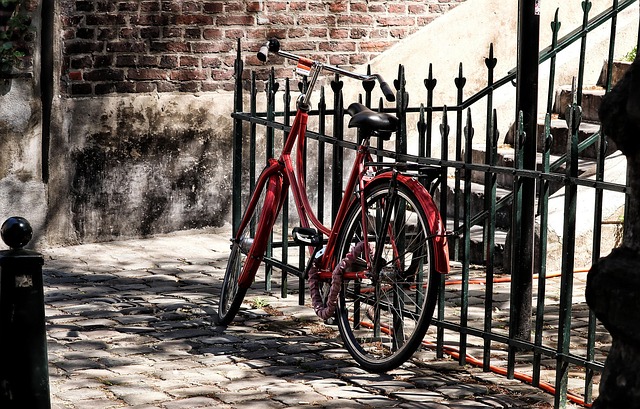DIY Fence Installation: A Comprehensive Guide for New Bedford Homeowners
Are you considering enhancing your New Bedford, Massachusetts property with a new fence? This comprehensive guide is tailored for ambitious DIY enthusiasts seeking to install their own fence. From preparing your yard and selecting suitable materials to navigating the planning process and mastering installation techniques, we’ve got you covered. Learn the essential steps, gather the right tools, and ensure your fence stands the test of time in New Bedford’s unique climate. Get ready to transform your outdoor space!
- Prepare Your Yard for Fence Installation
- Choose the Right Fence Material for New Bedford Climate
- Planning and Permitting: Essential Steps Before You Start
- Tools and Equipment Needed for a Successful DIY Project
- Step-by-Step Guide to Installing Your Fence
- Maintenance Tips to Keep Your Fence Looking Good
Prepare Your Yard for Fence Installation
Before beginning any DIY fence installation project, preparing your yard is a crucial step. Start by clearing the area where the fence will be erected. Remove any debris, trees, or shrubs that might interfere with the process. This includes cutting down overgrowth and trimming hedges to ensure a smooth and even surface.
Marking out the perimeter of your desired fence line with string or chalk is essential. Check local regulations and property lines to ensure compliance, especially when dealing with neighbors. Once the layout is finalized, you can begin digging holes for the fence posts, ensuring they are deep enough to provide stability against New Bedford’s varying weather conditions.
Choose the Right Fence Material for New Bedford Climate
When selecting a fence material for your New Bedford, Massachusetts property, consider the region’s climate. This area experiences all four seasons, from hot summers to cold winters and snowy conditions. Opting for durable materials that can withstand such variations is key. Wood, while attractive, may require more maintenance due to weather exposure, especially when treated properly. Vinyl fences are a popular choice as they’re low-maintenance and resistant to rot, warping, and cracking in adverse weather. Metal fences offer longevity and strength but can be pricier and might need additional coating for rust prevention. For a balance between affordability and durability, composite materials mimic the look of wood without the same level of upkeep.
Planning and Permitting: Essential Steps Before You Start
Before beginning your DIY fence installation project, it’s crucial to plan and obtain any necessary permits. New Bedford, Massachusetts has specific regulations regarding property alterations, including fence installation. Check with the local building department to understand the requirements for your project, such as fence height restrictions, material guidelines, and set-back rules from property lines and structures. Obtain a building permit to ensure compliance and avoid potential fines or delays during construction.
Thorough planning also involves assessing your property’s topography and existing features. Consider the layout of your yard, trees, and other obstructions that might impact the fence’s placement and design. Measuring and marking the proposed fence line will help visualize the project and make it easier to obtain accurate materials.
Tools and Equipment Needed for a Successful DIY Project
When taking on a DIY fence installation project, having the right tools and equipment is half the battle won. You’ll need basic hand tools such as a hammer, measuring tape, level, and a post-hole digger to prepare the ground. A power drill with various bits is also essential for installing fasteners securely. For longer fences, consider investing in a string line tool to ensure straight lines and consistent spacing.
Don’t forget protective gear, including safety goggles, gloves, and ear protection, especially when using power tools. Proper footwear is crucial to prevent injuries from tripping or sharp objects. Having a helper can also be beneficial for lifting heavy materials and handling tools, making the process safer and more manageable.
Step-by-Step Guide to Installing Your Fence
Installing a fence is a rewarding DIY project that can enhance your New Bedford, Massachusetts property’s security and aesthetics. Start by identifying the perimeter you want to fence and measuring the area accurately. Purchase posts, rails, and pickets suitable for your desired style and local climate.
Next, mark the post locations along the perimeter, ensuring they align with your design and local building codes. Dig holes for the posts, making sure they’re deep enough to provide stability. Install the posts securely using concrete, allowing it to set completely. Attach rails to the posts, creating a strong framework. Finally, secure pickets or panels to the rails, completing your new fence.
Maintenance Tips to Keep Your Fence Looking Good
After installing your new fence, regular maintenance will ensure it remains in top condition and retains its aesthetic appeal. Start by cleaning the fence regularly to remove dirt, debris, and any accumulated moisture. Use a soft-bristled brush or garden hose to gently wash the surface, then dry it thoroughly to prevent water damage.
Painting or staining your fence every one to two years will protect it from the elements and UV rays. Choose a high-quality product suitable for outdoor use and apply it evenly across all surfaces. Regular inspection is also key; keep an eye out for any signs of wear, rot, or damage, addressing them promptly to prevent further deterioration.
